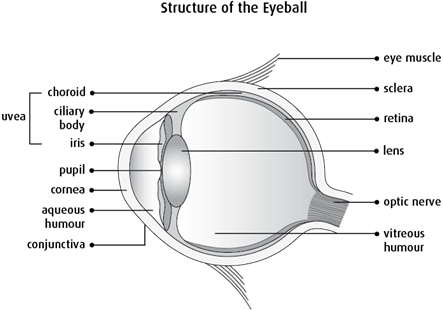What is eye cancer?
Eye cancer starts in the cells in or around the eye. A cancerous (malignant) tumour is a group of cancer cells that can grow into and destroy nearby tissue. It can also spread (metastasize) to other parts of the body.
The eye is the organ that lets you see. The eyeball is the main part of the eye. It
includes the iris (the thin, muscular coloured part of the eye) and the pupil (the
small, black central area of the eye). The eyeball sits in and is protected by the eye
socket (orbit). The orbit is a bowl-shaped cavity made up of bone formed from the skull
that contains the eyeball, muscles, lacrimal gland (tear gland), nerves, fat and
connective tissues. The parts surrounding the eyeball are called accessory (adnexal)
structures and include the eyelid, conjunctiva (a clear


Cells in the eye sometimes change and no longer grow or behave normally. These changes may lead to non-cancerous (benign) tumours in the eye such as a choroidal hemangioma or an eye mole.
Changes to cells of the eye can also cause precancerous conditions. This means that the abnormal cells are not yet cancer, but there is a chance that they may become cancer if they aren’t treated. The most common precancerous condition of the eye is primary acquired melanosis of the conjunctiva.
In some cases, changes to eye cells can cause eye cancer. Most often, eye cancer in adults starts in melanocytes. These cells make melanin, which is a pigment that gives the eyes, skin and hair their colour. This type of cancer is called melanoma. Melanoma of the eye can start in different parts of the eye. Melanoma most often starts to grow inside of the eyeball and is called intraocular melanoma.
Lymphoma is another type of cancer that can affect the eye. It is the second most common type of eye cancer.
Rare types of eye cancer can also develop. These include squamous cell carcinoma, basal cell carcinoma and sebaceous carcinoma.
Retinoblastoma is the most common eye cancer in children. It starts in the cells of the retina. Find out more about retinoblastoma.
Other types of cancer can spread to the eye, but this is not the same disease as primary eye cancer. Cancer that starts in another part of the body and spreads to the eye is called eye metastasis. Eye metastasis is more common than primary eye cancer. It’s usually not treated in the same way as primary eye cancer. Most often, cancer spreads to the eye from the breast, lung or gastrointestinal (GI) tract.
